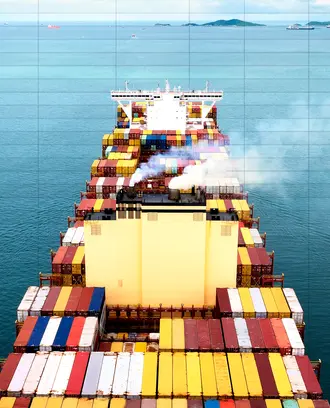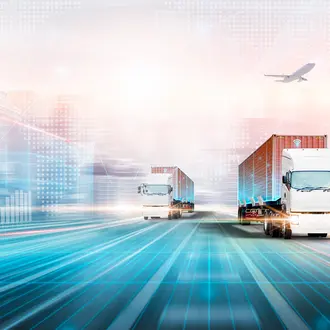Credit: Unsplash+
The numbers tell a worrisome story: Of 2,300-plus global respondents to the “State of Supply Chain Sustainability 2023” report, some 65% of respondents said their firms do not currently have a net-zero carbon emissions goal, and just 6% reported a year-over-year increase in organizational commitment to climate change mitigation.
The report’s sponsors — the MIT Center for Transportation & Logistics and the Council of Supply Chain Management Professionals — define supply chain sustainability as “the management of environmental and social impacts within and across networks consisting of suppliers, manufacturers, distributors, and customers.”
Here are five key takeaways from the report, which captures a turbulent world that continues to grapple with the complex goal of sustainability.
Commitment to supply chain sustainability appears to be resilient to certain types of crises but vulnerable to others.
While major disruptions such as COVID-19 and Russia’s invasion of Ukraine were destabilizing, they actually helped boost organizational commitment to sustainability — by 79% and 61%, respectively. The reason: When circumstances compelled firms to redraw supply lines, many did so with a new emphasis on supply chain resiliency and sustainability.
On the other hand, many firms reported that their commitment to supply chain sustainability withered as a result of pessimistic 2023 economic forecasts. Why?
Some 65% of respondents to a recent global survey said their firms do not currently have a net-zero carbon emissions goal.
The answer lies in the difference between a network disruption and an economic disruption. “The former demands a new network, whereas the latter demands a leaner, more cost-effective one,” the report states. “In times of projected economic malaise, the long run recedes from worried supply chain planners’ field of vision.”
Sustainability commitments aren’t consistent across supply chains and around the world.
No surprise: Companies with net-zero carbon emissions goals are clustered in richer countries.
Global wealth and net-zero adoption skew heavily toward Europe and the United States. Approximately 53% of European and 44% of American firms have adopted net-zero goals. Meanwhile, Asia shows 36% adoption and Latin America 22%.
“This reveals a concerning disconnect: Net-zero goals reflect the commitment to address the global climate crisis. But in modern practice, net-zero goals appear to be applied with a much more limited scope, and mostly in very wealthy countries,” the report states. This raises the question of whether the global ambitions of net-zero goals can be achieved with only localized adoption.
Pressure to increase supply chain sustainability comes from multiple quarters.
What causes firms to engage in supply chain sustainability? Supply chain managers indicated that investors are far and away the fastest-growing source of pressure to improve their sustainability. That group is followed by governments and international governing bodies, corporate buyers, company executives, end consumers, and current and prospective employees.
Related Articles
Audits help companies keep tabs on progress.
When asked which practices they have in place to manage supply chain sustainability, supplier codes of conduct and supplier audits topped the list, with 80% and 43% of respondents employing them, respectively. Less popular: visibility solutions and environmental remediation technologies.
Many firms have no net-zero goals.
Only 35% of survey respondents said their firms have net-zero goals. The report also notes that among the companies that do have net-zero goals, many “appear to be unprepared for their coming deadlines.”
In particular, nearly half of respondents with net-zero goals reported that their firm won’t even begin measuring or reducing Scope 3 emissions for five years or more. At the same time, roughly half of respondents reported that their organization has a net-zero deadline of 2040 or earlier.



